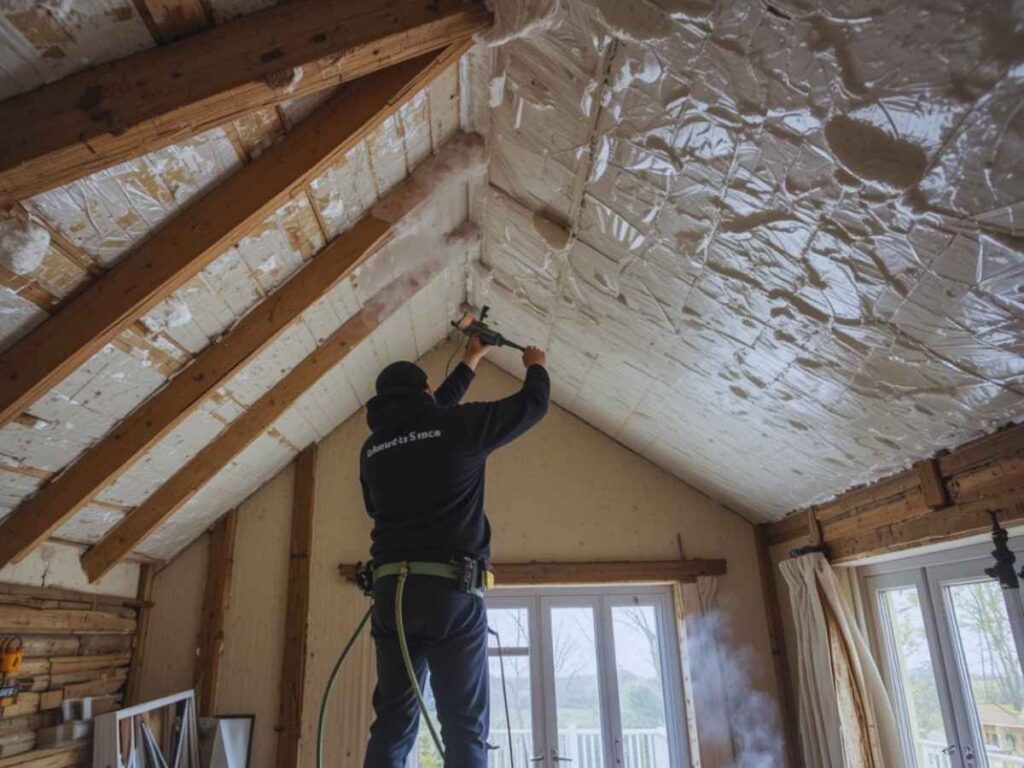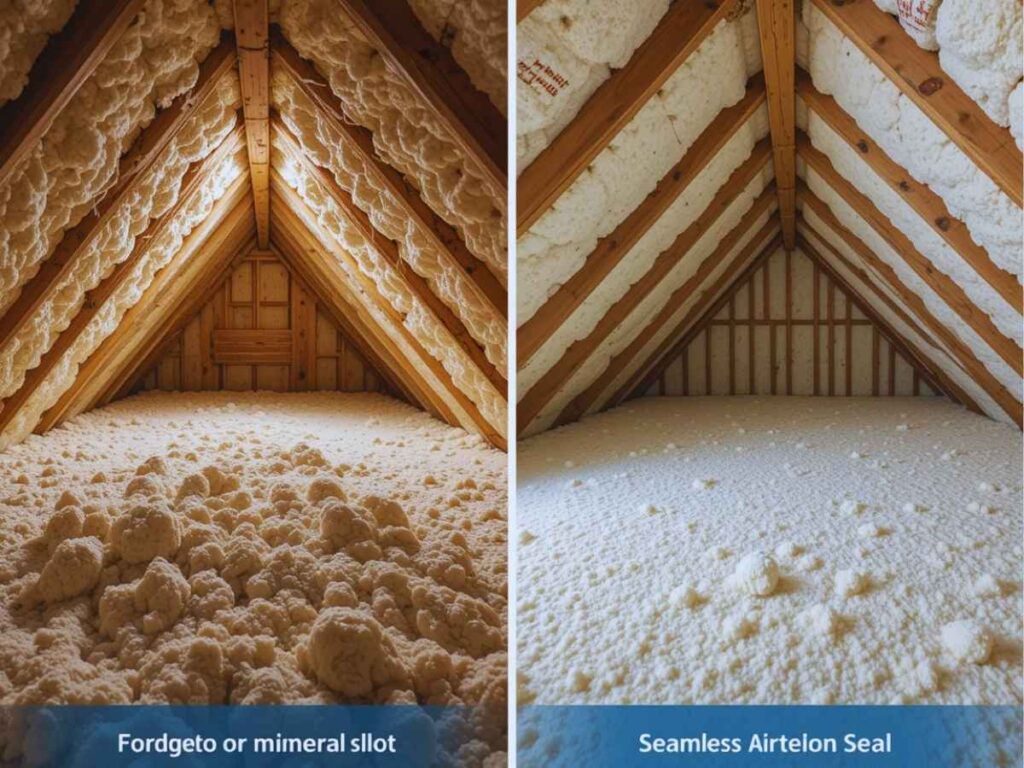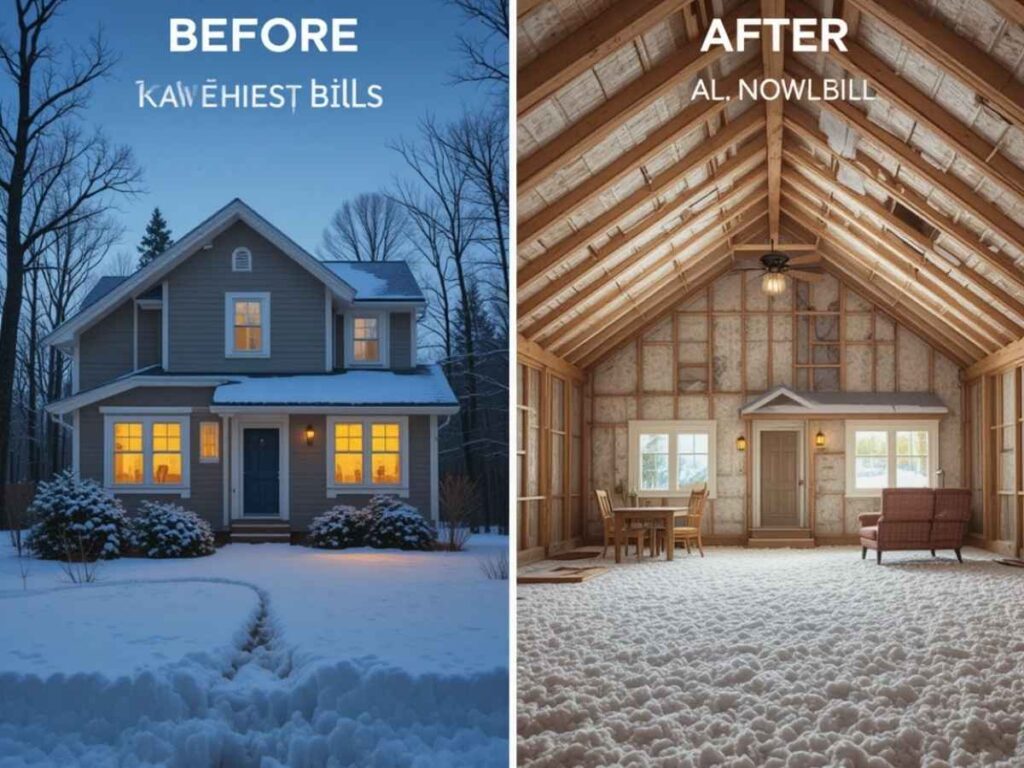Introduction
If you’ve been bemoaning astronomically high energy bills and wondering how you can make your house more comfortable and energy-efficient, you’re not alone. What with the UK’s chillier weather done being just around the corner, it has prompted many homeowners to start thinking about ways to minimise heat loss in their homes and increase overall home efficiency.
Enter foam loft insulation. Unlike the standard methods of fiberglass or mineral wool, foam insulation gives you better energy efficiency, more comfort, and is environmentally friendly. With the increasing trend for sustainability and energy saving, it’s fast catching up as a must-have home improvement for UK homes.
This piece gives you the lowdown on foam loft insulation with information on how it works, the process of installation, and real-life success stories to help you determine if this modern form of insulation is suitable for your home.

What Is Foam Loft Insulation?
Video of Foam Loft Insulation Foam Loft Insulation New 1 Material Foam loft insulation is a new and innovativetype of insulating material that is installed in your attic or loft space in order to help you save on heat loss and keep your home warm and comfortable in the winter months. It functions to air-seal and prevent cold air from seeping into a home in the winter, and in the summer, it prevents hot air from entering a home.
The most common types of foam insulation used in lofts are:
- Spray Foam Insulation: Sprayed on, it expands and completely seals voids and corners.
- Rigid Foam Boards: Dense panels with very high r–values that are suitable for flat and even surfaces.
Get Great Results Compared to types of insulation such as fiberglass or mineral wool, foam insulation does a superior job at not only insulating, but also air sealing — your home stays warmer, quieter and drafts free.
Energy Efficiency Benefits of Foam Loft Insulation
Reduced Energy Consumption
Foam Loft Insulation Foam loft insulation creates a seamless barrier that dramatically cuts heat transfer. Foam insulation, on the other hand, will not easily allow for gaps and any air leaks, so warm air remains in your home in the winter and out during the summer.
Lower Energy Bills
By eliminating heat loss, foam insulation decreases how much energy is required to maintain a satisfactory indoor temperature. UK homeowners say they can save 30-50% a year on energy bills once foam attic insulation has been installed.
Eco-Friendly Benefits
Using energy-efficient insulation such as foam is in keeping with the UK’s drive towards sustainability. When you use less energy, you decrease your home’s carbon footprint, helping the environment.
Real-Life Success Story
Take Sarah from Surrey, who had foam loft insulation installed in her three-bedroomed semi-detached house. In the first 12 months, she saw a 40% cut in energy bills and significantly warmer home during winter.

How Foam Loft Insulation Improves Home Comfort
Better Temperature Regulation
Now, with foam loft insulation, say goodbye to a chilling draft in the winter and sweltering room in the summer. The airtight seal blocks out drafts and provides you with an energy efficient home, so you can enjoy a more comfortable living space, no matter the season.
Soundproofing Benefits
Foam insulation not only resists heat transfer, but it also absorbs sound waves. This results in less noise from the outside coming in and less noise escaping the inside out, so it’s easier to concentrate and relax.
Increased Home Value
Energy-saving improvements such as foam loft insulation could prove a major draw to buyers. Should you choose to sell or rent your property, insulation upgrades can also raise the market value and desirability of your home.

Foam Loft Insulation and Sustainability
Sustainable Materials
Most foam insulation products are composed of environmentally sound ingredients that not only make your home more energy efficient, but also reduce its environmental impact compared to other types of insulation.
Long-Term Environmental Impact
Less demand for energy means a lighter impact on the environment, a foam insulation brings us. It relieves pressure on energy grids and reduces greenhouse gas emissions.
Government Incentives
The government has a number of certain incentives to get more homeowners to make their home more energy efficient, including insulation grants as part of the Green Homes Grant scheme. The insulation may be free for home owners who meet the requirements and are looking for help to pay their costs – trying to make an excuse for foam loft insulation.
Foam Loft Insulation Installation Process
Installing foam loft insulation typically involves the following steps:
- How to fit foam loft insulation: The process of spacer filling with foam loft insulation will generally follow these steps:
- Appointment: Your space is surveyed and insulation requirements discussed.
- Preparation: Clean the attic and prepare it for installation.
- Application: Either sprayed-in foam or rigid foam boards, depending on the technique preferred.
- Drying Time (for spray foam): The foam cures and hardens to create an airtight barrier.
- Final Review: The installer reviews the job to confirm it was finished and abides by safety standards.
DIY vs Professional Installation
Though DIY kits exist, professional foam insulation installation is best to guarantee safety and best efficacy. What’s more, professional installers will know how to deal with any potential issues, such as awkward corners or pre-existing damp problems.
Costs
The average cost of foam loft insulation in the UK is £1,500-£2,500 per house, and this will depend on the size of the roof void and the type of insulation. Though it has a relatively high upfront cost, it’s an affordable option when you factor in the savings you’ll see on your energy bill over time.

Common Misconceptions About Foam Loft Insulation
“It’s Too Expensive”
Foam insulation can be a bit more expensive to install upfront than other products however the savings over time in energy costs and its long lasting nature, all make it a smart choice.
“It’s Unsafe or Harmful”
Modern foam insulation products have been engineered to comply with rigorous safety and environmental rules. They are non-toxic after curing and help enhance indoor air quality by preventing drafts and blocking allergens.
“It’s Difficult to Install”
Professional installers can have it done fast and easy, usually in a day or two.
Comparing Foam Loft Insulation to Other Types of Insulation
| Feature | Foam Loft Insulation | Fiberglass | Mineral Wool |
| Airtight Seal | ✅ | ❌ | ❌ |
| Long-Term Durability | ✅ | ❌ | ✅ |
| Energy Efficiency | ✅ | ❌ | ❌ |
| Installation Complexity | Moderate | Easy | Easy |
| Eco-Friendly Options | ✅ | ❌ | ✅ |
Foam insulation outperforms traditional methods in nearly all categories, offering better efficiency, durability, and environmental benefits.
Real-Life Examples of Homes That Benefited from Foam Loft Insulation
- Case Study 1
One Manchester family saved £500 a year on heating after installing foam to their loft. The patients had reported “remarkable” indoor-winter improvements.
- Case Study 2
A London property investor who retrofitted foam insulation in a rental property. The renovation improved the energy efficiency rating of the property and as a result, appealed more and was rented for higher monthly rent.
Why Foam Loft Insulation Is the Future for UK Homes
So, not just another home improvement, foam loft insulation is an investment in comfort, energy efficiency as well as longevity. It’s the intelligent investment for homeowners throughout the UK, reducing energy bills, enhancing the home’s internal living environment, and helping sustain the environment for the future.
Make the first move for a by today. So get in touch with a professional, have your loft evaluated and learn how foam insulation could revolutionise your home.
F&Q
What is spray foam loft insulation and how does it do to work?
Spray foam loft insulation is a material which is sprayed on the underside of your roof where it expands to fill in gaps and form a layer of insulation, creating a continuous, airtight layer of insulation to help prevent heat escaping and save you money on your energy bills.
What are some of the advantages of spray foam loft insulation?
The main advantages are more energy savings, less heat loss, lower fuel bills, improved air sealing, long-lasting durability, and enhanced property value.
What are the potential drawbacks of spray foam loft insulation?
Dangers to be cautious of: Health concerns from poor fan quality, decreased roof ventilation, condensation or moisture problems, potential timber rot, as well as financial obstacles with mortgage approval or re-sale property issues if done incorrect.
How to fit spray foam in the loft and is it something you can do yourself?
Like many insulations, foam must be sprayed onto walls — which expand once sprayed and cure — by a trained professional to prevent injury and ensure effectiveness.
What maintenance does spray foam loft insulation need after installation?
The spray foam insulation system requires very little maintenance, but it is recommended that quarterly or yearly inspections take place to ensure that a spray foam roof has not been damaged.

